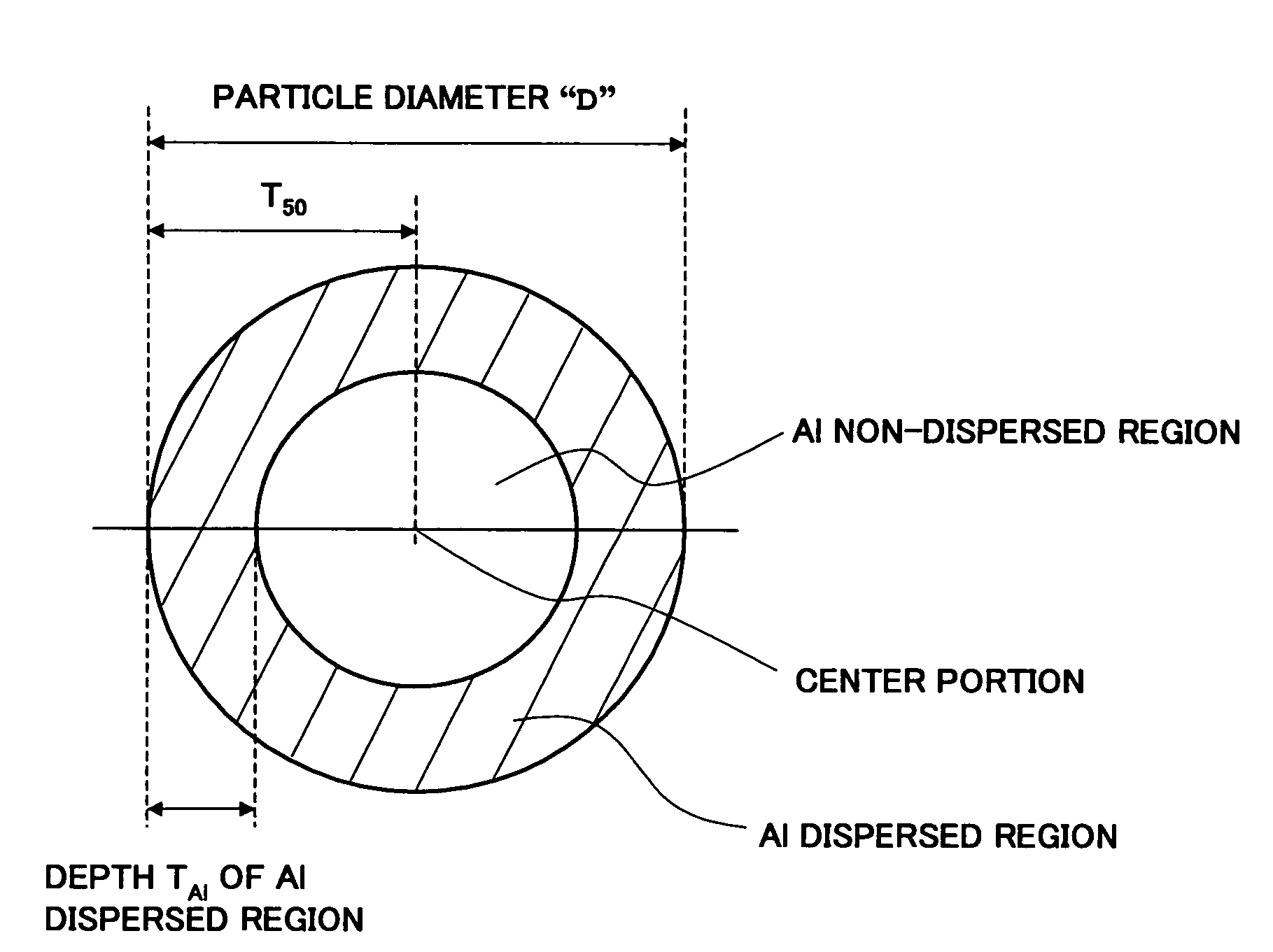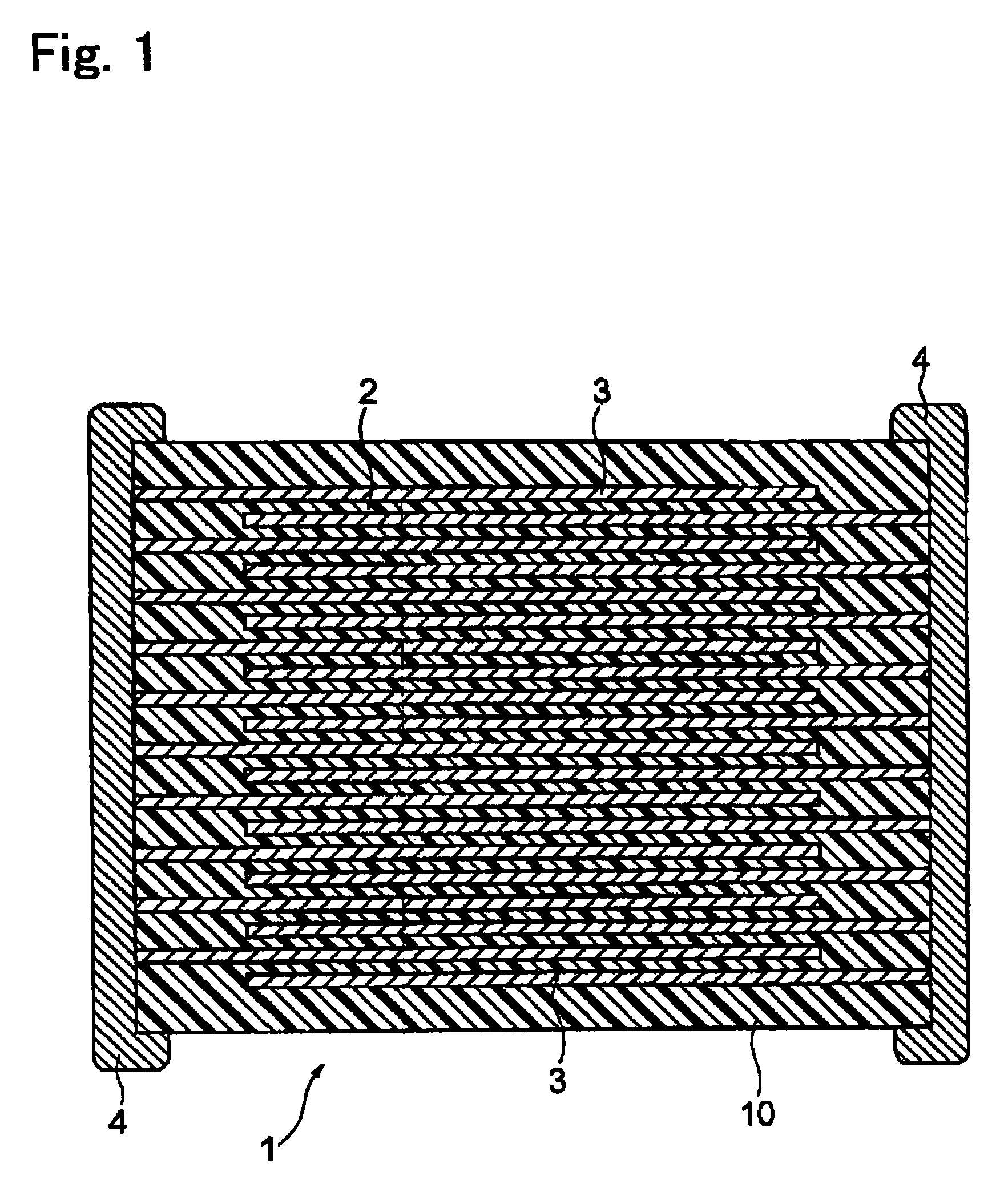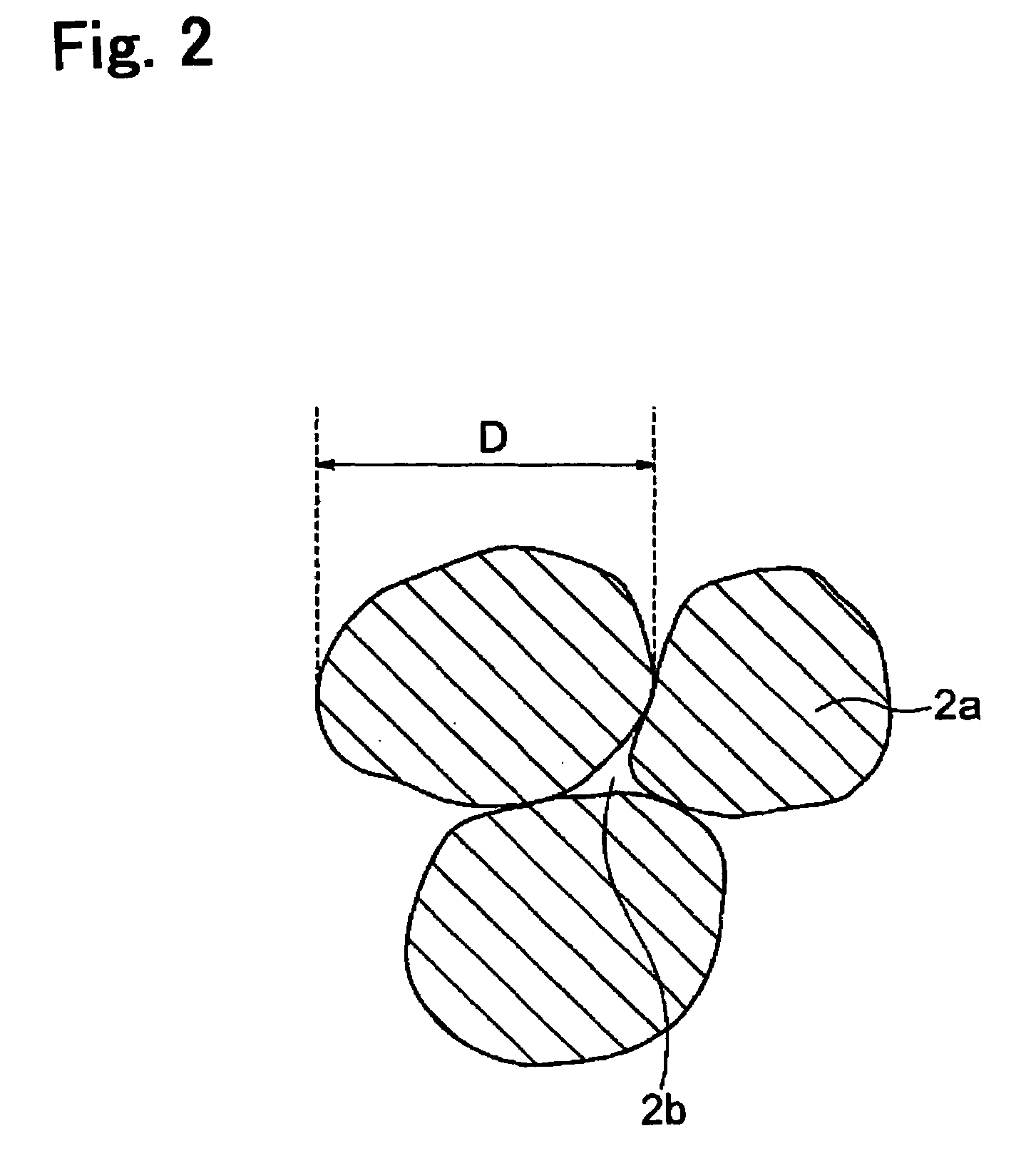Electronic device, dielectric ceramic composition and the production method
a technology of dielectric ceramics and electronic devices, applied in the direction of fixed capacitors, natural mineral layered products, capacitor manufacture, etc., can solve the problems of short ir lifetime, reduced dielectric layers, and reduced specific resistance, and achieves ir temperature dependence, high specific permittivity, and improved tc bias characteristics
- Summary
- Abstract
- Description
- Claims
- Application Information
AI Technical Summary
Benefits of technology
Problems solved by technology
Method used
Image
Examples
first embodiment
[0058]As shown in FIG. 1, a multilayer ceramic capacitor 1 as an electronic device according to an embodiment of the present invention has a capacitor element body 10, wherein dielectric layers 2 and internal electrode layers 3 are alternately stacked. Both end portions of the capacitor element body 10 are formed with a pair of external electrodes 4 respectively conducting to the internal electrode layers 3 arranged alternately in the element body 10. The internal electrode layers 3 are stacked, so that the respective end surfaces are exposed alternately to surfaces of two facing end portions of the capacitor element body 10. The pair of external electrodes 4 are formed on both end portions of the capacitor element body 10 and connected to the exposed end surfaces of the alternately arranged internal electrode layers 3, so that a capacitor circuit is configured.
[0059]A shape and size of the capacitor element body 10 are not particularly limited and may be suitably set in accordance ...
second embodiment
[0147]Comparing with the first embodiment, in the second embodiment, a composition of a dielectric ceramic composition composing the dielectric layers 2 is different in points explained below. Other than that, the second embodiment has the same configuration and effects as those in the first embodiment and the duplicate explanation will be omitted.
[0148]Namely, in the second embodiment, in addition to the main component, an Al oxide, the first to third and fifth to seventh subcomponent explained in the first embodiment, a fourth subcomponent including an oxide of R1 (note that R1 is at least one kind selected from Sc, Er, Tm, Yb and Lu) is included.
[0149]The fourth subcomponent (an oxide of R1) exhibits an effect of shifting the Curie's temperature to the high temperature side and an effect of flattening the capacitor-temperature characteristics. A content of the fourth subcomponent is preferably 0.5 to 7 moles, and more preferably 0.5 to 5.0 moles in terms of an R1 element with res...
example 1
[0155]In the example 1, multilayer ceramic capacitor samples corresponding to the first embodiment (the X7R characteristics) were produced and evaluated.
[0156]First, 100 moles of BaTiO3 as a main component material and 2.0 moles of Al2O3 were prepared. Next, these materials were mixed to obtain powder before calcining, and calcining is performed thereon under the condition below, so as to obtain five different kinds of powders calcined at different temperatures (corresponding to samples 1 to 5 in Table 1).
[0157]Calcining temperature: temperatures between 700 and 1000° C.
[0158]Calcining time: two hours
[0159]Note that the calcining temperatures of the respective samples were 700° C. in a sample 1, 750° C. in a sample 2, 800° C. in a sample 3, 850° C. in a sample 4 and 1000° C. in a sample 5.
[0160]Next, the obtained preliminarily fired powders were pulverized, added with subcomponents below, wet mixed by a ball mill for 16 hours and dried to obtain dielectric materials (dielectric cera...
PUM
| Property | Measurement | Unit |
|---|---|---|
| capacity-temperature | aaaaa | aaaaa |
| capacitor-temperature | aaaaa | aaaaa |
| capacitor-temperature characteristics | aaaaa | aaaaa |
Abstract
Description
Claims
Application Information
 Login to View More
Login to View More - R&D
- Intellectual Property
- Life Sciences
- Materials
- Tech Scout
- Unparalleled Data Quality
- Higher Quality Content
- 60% Fewer Hallucinations
Browse by: Latest US Patents, China's latest patents, Technical Efficacy Thesaurus, Application Domain, Technology Topic, Popular Technical Reports.
© 2025 PatSnap. All rights reserved.Legal|Privacy policy|Modern Slavery Act Transparency Statement|Sitemap|About US| Contact US: help@patsnap.com



